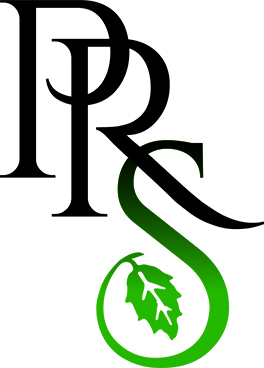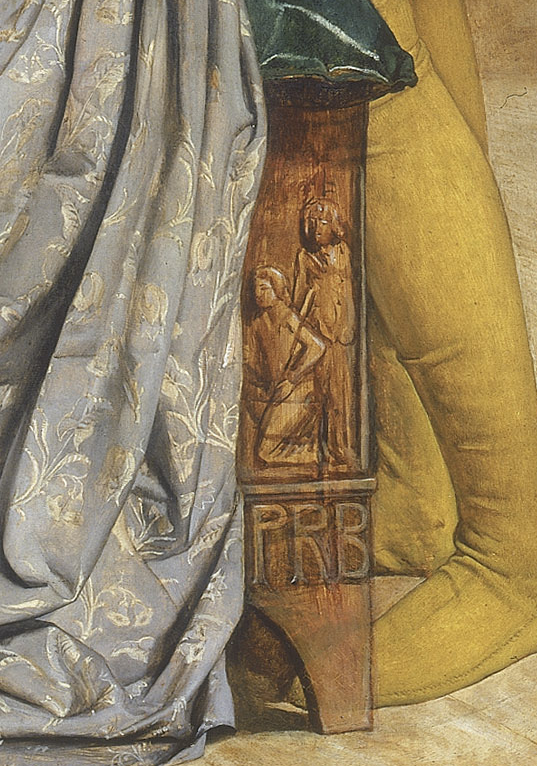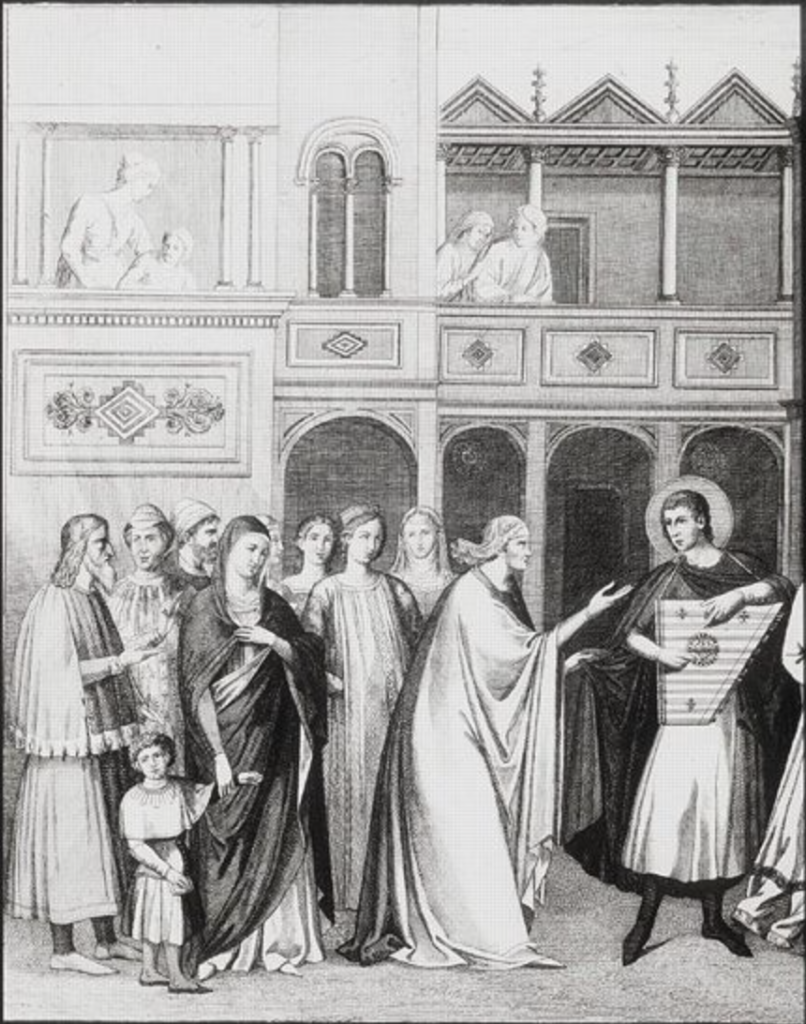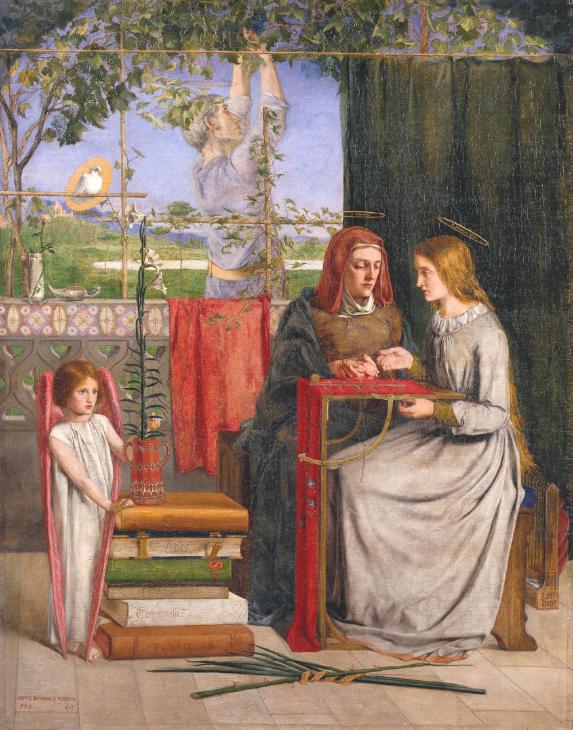Mid-Victorian London, 1848: twenty-year old Dante Gabriel Rossetti, William Holman Hunt, 21, and John Everett Millais, 19, bond over their artistic passions and their shared disdain for the Royal Academy, believing that British art has become predictable and formulaic. Eager to forge a new direction, they are also intrigued to find inspiration from a time period long overlooked by the denizens of the art world.
Fascinated by the late medieval and early renaissance, their individual admiration for art created prior to the artist Raphael intensifies into a collective obsession. It is the dawn of the industrial revolution, and these idealists aspired to express themselves with colorful works reminiscent of the 14th and 15th century, but with a bold, modern slant that blended realism and romance.
One evening at Millais’ parents’ home on 7 Gower Street in Bloomsbury, the trio peruses a book filled with engravings of the fourteenth century murals of the Campo Sant di Pisa. Although the three had been excitedly discussing their idealistic notions of art for several months, these engravings provide a moment of sublime synthesis, channeling their enthusiasm into the formation of a formal brotherhood.
Years afterward, William Holman Hunt would fondly reflect – “It was probably the finding of this book at this special time which caused the establishment of the Pre-Raphaelite Brotherhood. Millais, Rossetti, and myself were all seeking some sure ground, some starting point for our new art. As we searched through this book of engravings, we found in them or thought we found, that freedom from corruption, pride and disease for which we sought. Here there was no trace of decline, no conventionality, no arrogance… Think what a revelation it was to find such work at such a moment, and to recognize it with the triple enthusiasm of our three spirits.”
On the eighth of September 1848, they added four more kindred souls to their group, sculptor Thomas Woolner, artist James Collinson, painter/writer Frederick George Stephens, and writer William Michael Rossetti (brother of Dante Gabriel Rossetti), and the passionate trio became a secret fraternity of seven, the Pre-Raphaelite Brotherhood.
Soon, the mysterious initials PRB could be seen in works exhibited at the Royal Academy, one of the earliest slyly and subliminally hidden in the lower-right corner of Millais’ Lorenzo and Isabella (see detail at the top of this post).
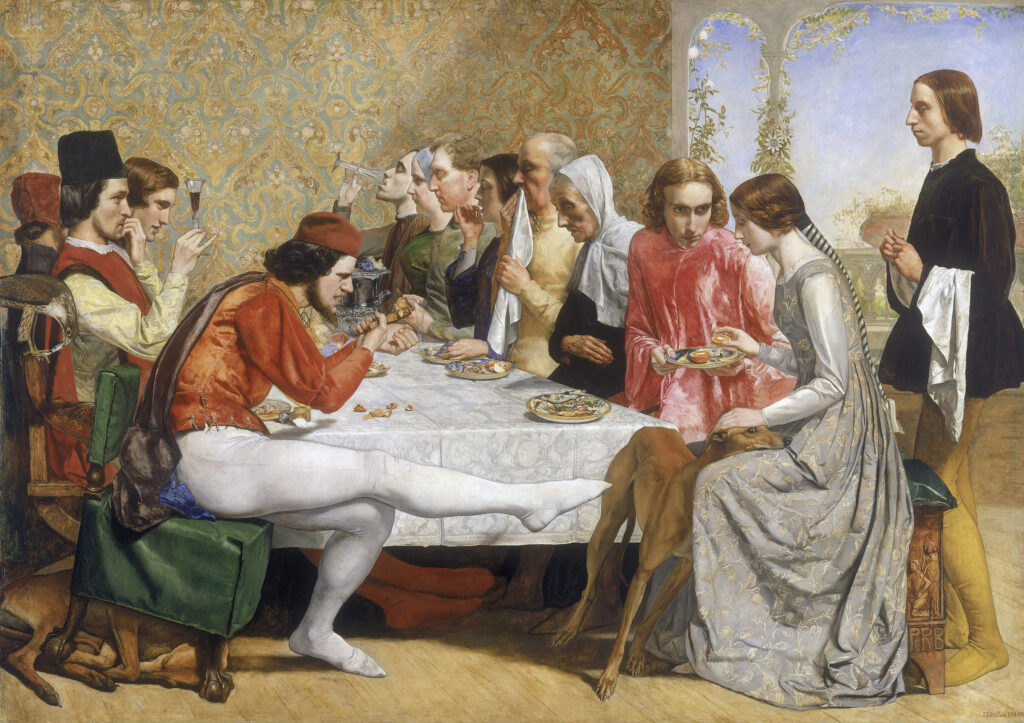
The women in their circle became involved in the movement, mostly as models, beginning with Christina Rossetti, sister to Dante Gabriel and William. Together the Pre-Raphaelites published The Germ, a periodical that showcased their poetry and illustrations. The sole female contributor, Christina’s poetry was included under the pseudonym Ellen Alleyne.
Christina appears as Mary in Rossetti’s first painting as a member of the PRB, The Girlhood of Mary Virgin. Their mother, Frances, portrays Mary’s mother.
Rossetti exhibited the work along with these two sonnets that were inscribed on the frame:
I This is that blessed Mary, pre-elect God's Virgin. Gone is a great while, and she Dwelt young in Nazareth of Galilee. Unto God's will be brought devout respect: Profound simplicity of intellect, And supreme patience. From her mother's knee Faithful and hopeful; wise in charity; Strong in grave peace; in pity circumspect. So held she through her girlhood; as it were An angel-watered lily, that near God Grows, and is quiet. Till one dawn, at home, She woke in her white bed, and had no fear At all,—yet wept till sunshine, and felt awed; Because the fulness of the time was come. II These are the symbols. On that cloth of red I' the centre, is the Tripoint,—perfect each Except the second of its points, to teach That Christ is not yet born. The books (whose head Is golden Charity, as Paul hath said) Those virtues are wherein the soul is rich: Therefore on them the lily standeth, which Is Innocence, being interpreted. The seven-thorn'd briar and the palm seven-leaved Are her great sorrow and her great reward. Until the end be full, the Holy One Abides without. She soon shall have achieved Her perfect purity: yea, God the Lord Shall soon vouchsafe His Son to be her Son.
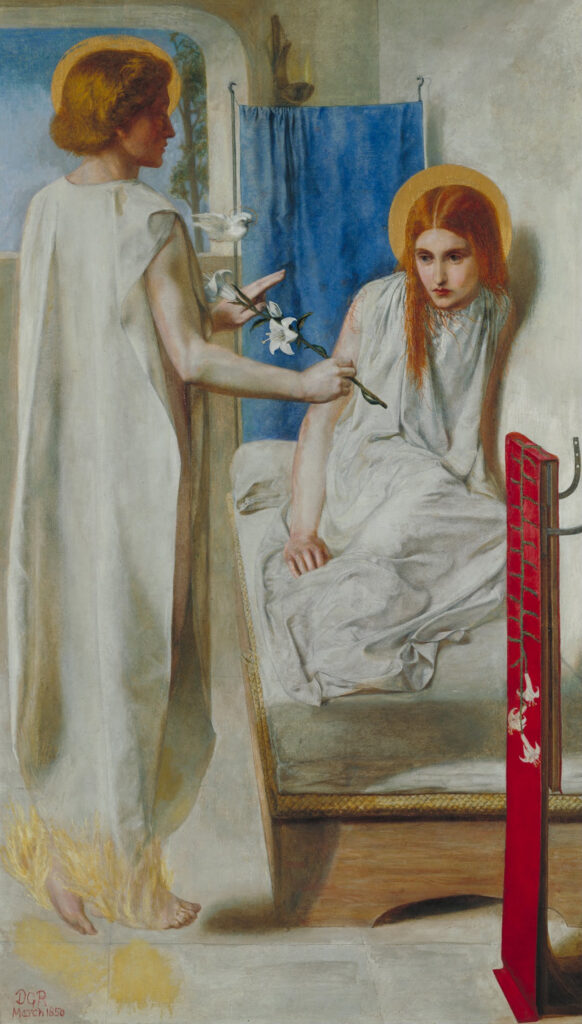
Rossetti painted Christina as Mary again in Ecce Ancilla Domini and their brother William modeled for the angel Gabriel.
We’ll explore other early Pre-Raphaelite works this month; I share Rossetti’s paintings of the Virgin Mary today because I believe they demonstrate three important aspects seen frequently in the Pre-Raphaelite world:

![]() The use of symbolism. In Rossetti’s paintings of Mary, we see palm branches to indicate Palm Sunday, books that symbolize cardinal virtues, a vine that represents Jesus as the “True Vine”, and the lily that is often seen in conjunction with Mary as a symbolism of her purity. There are several more symbols, and to discuss them all necessitates a separate post. Suffice to say the PRB devoted great effort crafting details that allow the viewer to “read the painting”, to use Victorian art critic John Ruskin’s metaphor for interpreting works.
The use of symbolism. In Rossetti’s paintings of Mary, we see palm branches to indicate Palm Sunday, books that symbolize cardinal virtues, a vine that represents Jesus as the “True Vine”, and the lily that is often seen in conjunction with Mary as a symbolism of her purity. There are several more symbols, and to discuss them all necessitates a separate post. Suffice to say the PRB devoted great effort crafting details that allow the viewer to “read the painting”, to use Victorian art critic John Ruskin’s metaphor for interpreting works.
![]() The exhibiting of paintings along with lines of poetry, a marriage of two art forms.
The exhibiting of paintings along with lines of poetry, a marriage of two art forms.
![]() The use of family members and friends as models. Often this was out of necessity, however as time progressed, each Pre-Raphaelite artist would have their muses (and consequent entanglements). Regardless of motive, we see the same faces repeatedly throughout their works and exploring them can be a quite satisfying rabbit hole.
The use of family members and friends as models. Often this was out of necessity, however as time progressed, each Pre-Raphaelite artist would have their muses (and consequent entanglements). Regardless of motive, we see the same faces repeatedly throughout their works and exploring them can be a quite satisfying rabbit hole.
On that September in 1848, seven young artists set out to change the art world, and they certainly succeeded. Their work begat an expanded circle of influence which developed roots that grew in multiple directions: the Arts and Crafts movement, Art Nouveau, and the Symbolist movement. Even The Lord of the Rings and The Hobbit have the Pre-Raphaelites embedded in their DNA.
Today I choose to honor the memory of that seminal evening and the art that grew from it – art that continues to inspire and captivate so many of us.
The idealistic youths who formed the PRB accomplished more than they could have possibly predicted during that fateful meeting in 1848, and their lives took several unexpected twists and turns – many quite tragic and dramatic. As always, my goal at Pre-Raphaelite Sisterhood is to explore their history and their work with honesty and respect, along with the curiosity and desire to connect their world to ours.
I strongly believe that in peering through the Pre-Raphaelite lens, there remain truths to unfold, whether delving into the cautionary tales of their lives, the problematic gender issues of their time, or simply absorbing the beauty they strove so hard to create.
Art is a mirror and as Joseph Campbell wisely said, “all of these wonderful poetic images of mythology are referring to something in you.” Likewise, the many different ways we can consider their work simultaneously refers to something within us and informs us.
You are cordially invited to join us in celebrating the camaraderie the Pre-Raphaelite Brotherhood felt over 17 decades ago. Imagine the breathless anticipation, the youthful vigor, the eagerness to commit themselves to painting their world into a different and better place.
In their own ways, they did that – and we can, too.
“We were really like brothers, continually together and confiding to one another all experience bearing on questions of art and literature and many affecting us as individuals. We dropped using the term ‘Esquire’ on letters, and substituted ‘P.R.B.’ There were monthly meetings, at the houses and studios of the various members in succession; occasionally a moonlight walk or a night on the Thames. Beyond this, but very few days can have passed when two or more P.R.B.s did not foregather for one purpose or another…We had our thoughts, our unrestrained converse, our studies, aspirations, and actual doings; and for every P.R.B. to drink a cup or tea or coffee or a glass or two of beer, in the company of other P.R.B.s, with or without the accompaniment of tobacco, was a heart-relished luxury. Those were the days of youth, and each man in the company even if he did not project great things of his own, revelled in poetry or sunned himself in art.”
Dante Gabriel Rossetti: His Family Letters, edited by William Michael Rossetti, 1895
